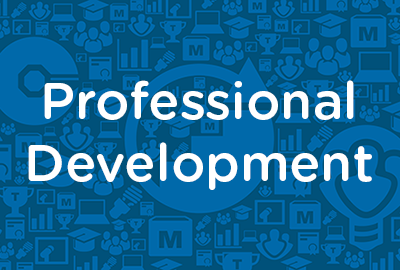 |
Conducting Meetings: Listening Effectively and Asking Questions (Instructor Guide) |
0.50 |
To communicate effectively during a meeting, you have to listen and ask appropriate questions. Listening and questioning are two interdependent skills that will help you create a positive climate, develop positive dialog, and achieve the group’s goals.
By listening and questioning effectively, you’ll actively engage yourself and others in the meeting. Actively participating will enable you to quickly identify and address other participants’ thoughts, ideas, and concerns. Facilitating communication in this manner will foster individual and group success.
In this course you will learn to: identify the main causes of conflict, the ways to resolve conflict in meetings, and the common difficult personality types in meetings, and identify the characteristics of a positive and negative climate, and the steps to build a positive climate when communicating.
This Instructor's Edition of this course includes notes and suggestions to assist you in presenting the material, whether in an in-person classroom setting, or as an instructor-led online or distance-learning course. It also provides you with the answers to questions found in mid-lesson activities, as well as in the quiz that concludes the course. |
 |
Creativity and Innovation: Creative Thinking Basics (Instructor Guide) |
1.34 |
Creativity is the ability to imagine new concepts or combine existing ideas in new and different ways. An old idea that was not applicable in the past might become practical if the factors that made it irrelevant have changed. These changes could be in the details of the idea, or in the situation in which it is to be applied.
Creativity is a key factor in personal development. There are certain traits that are evident in creative thinkers. To be creative, you need to differentiate between the traits that enhance your creativity, and those that inhibit it.
In this course you will: prepare yourself mentally and physically to be creative, use your experiences, innocence, intuition, and sense of adventure to increase your creativity.
This Instructor's Edition of this course includes notes and suggestions to assist you in presenting the material, whether in an in-person classroom setting, or as an instructor-led online or distance-learning course. It also provides you with the answers to questions found in mid-lesson activities, as well as in the quiz that concludes the course. |
 |
Creativity and Innovation: Creativity In Organizations (Instructor Guide) |
1.34 |
Creativity in an organization depends on various factors, such as the distribution of authority, the flow of information, and the culture. Some organizations encourage creative thinking to a large extent, and others discourage it. You can recognize a creative organization from its leaders. A leader who can influence a team and inspire them to work creatively builds a creative workforce. Such teams look at problem solving as a means to develop creativity. Although there are certain organizational situations that can enhance creativity, you should also be aware of the organizational factors and job conditions that can inhibit your creativity.
In this course you will learn to: develop creativity in an organization, and use creativity to generate ideas and solve problems.
This Instructor's Edition of this course includes notes and suggestions to assist you in presenting the material, whether in an in-person classroom setting, or as an instructor-led online or distance-learning course. It also provides you with the answers to questions found in mid-lesson activities, as well as in the quiz that concludes the course. |
 |
Creativity and Innovation: Fostering A Creative Environment (Instructor Guide) |
1.00 |
Creativity is the ability to look at a situation from every possible angle and determine potential ideas, solutions, or outcomes. Employees with this ability add value to an organization by increasing its efficiency and productivity. This is why board members, stockholders, managers, and other employees want to recruit and retain creative individuals. Everyone in an organization benefits from the recruitment of creative people.
When a candidate begins to search for a job or becomes aware of available positions, the candidate will form an opinion about your company based on promotional material, media articles, stories, and word-of-mouth. Creative people look for flexibility. Although managers might hire creative people, some managers still tend to stifle employees’ creativity with excessive rules and directions. Creative candidates must believe that they will have the flexibility to be innovative, or they will look elsewhere for employment.
In this course you will learn to: recruit and retain creative individuals, and maintain a creative environment.
This Instructor's Edition of this course includes notes and suggestions to assist you in presenting the material, whether in an in-person classroom setting, or as an instructor-led online or distance-learning course. It also provides you with the answers to questions found in mid-lesson activities, as well as in the quiz that concludes the course. |
 |
Creativity and Innovation: Personal Creativity (Instructor Guide) |
1.34 |
Creativity is often considered a talent that some people have. Actually, creativity's a skill that everyone can nurture through exercise and practice. You can prepare yourself both mentally and physically to be creative.
In this course you will learn to: prepare yourself mentally and physically to be creative, and use your experiences, innocence, intuition, and sense of adventure to increase your creativity.
This Instructor's Edition of this course includes notes and suggestions to assist you in presenting the material, whether in an in-person classroom setting, or as an instructor-led online or distance-learning course. It also provides you with the answers to questions found in mid-lesson activities, as well as in the quiz that concludes the course. |
 |
Creativity and Innovation: Promoting Team Creativity (Instructor Guide) |
1.34 |
The purpose of a team is to bring together people with diverse personalities, knowledge, education, and experience. This combined diversity encourages creativity and productivity to accomplish a common goal. Teams might consist of people from a single department or several departments.
Teams can generate new ideas, expand on or improve current ideas, make decisions, and solve problems. Teams can also be assigned to a specific task or be made responsible for a broader area, such as responding to changing customer expectations. When team members recognize their roles in a team, and the manager performs his responsibilities, creativity has a better chance of flourishing.
In this course you will learn to: identify characteristics of creative teams, and manage these teams effectively, conduct creative team sessions, and conduct brainstorming sessions, and use creativity to solve problems.
This Instructor's Edition of this course includes notes and suggestions to assist you in presenting the material, whether in an in-person classroom setting, or as an instructor-led online or distance-learning course. It also provides you with the answers to questions found in mid-lesson activities, as well as in the quiz that concludes the course. |
 |
Interviewing Skills: Evaluating and Deciding (Instructor Guide) |
0.67 |
When determining which candidate will be most successful in the job and your organization, you must complete two important steps. First, you should assess each candidate’s experience and past performance, and compare them to the job’s success factors. Then, you should compare candidates with one another to identify the one with the best fit for the job and culture.
In this course you will learn to: identify the types of bias and the steps to evaluate a candidate, and identify several criteria for ranking candidates.
This Instructor's Edition of this course includes notes and suggestions to assist you in presenting the material, whether in an in-person classroom setting, or as an instructor-led online or distance-learning course. It also provides you with the answers to questions found in mid-lesson activities, as well as in the quiz that concludes the course. |
 |
Motivation: Identifying, Planning, and Implementing: Positive Mental Attitude (Instructor Guide) |
1.00 |
Your attitude affects every aspect in your life—from your family relationships to your interactions with strangers to your connections with business coworkers. Your attitude could determine the difference between getting a promotion and getting fired, and between a happy marriage and divorce. Stanford Research Institute (SRI) conducted a study that found that success is 88% attitude, and 12% education.
In this course you will learn to: improve your self-confidence, recognize your fears and work to overcome them, and identify the difference between perceptions and reality.
This Instructor's Edition of this course includes notes and suggestions to assist you in presenting the material, whether in an in-person classroom setting, or as an instructor-led online or distance-learning course. It also provides you with the answers to questions found in mid-lesson activities, as well as in the quiz that concludes the course. |
 |
Motivation: Identifying, Planning, and Implementing: The Core Four (Instructor Guide) |
1.00 |
Surrounding the positive mental attitude are the Core Four components. These key areas of focus are critical to your motivation and your success. The Core Four elements are health, competence, relationships, and organization. Each of these elements requires focused attention. Without attention to one area, your life will be out of balance. Each area complements the other and is powered by your positive attitude.
In this course you will learn to: strive for good health to foster a positive mental attitude, maintain your competence to nurture a positive mental attitude, improve your relationships to indirectly improve a positive mental attitude, and strive to be organized to encourage a positive mental attitude.
This Instructor's Edition of this course includes notes and suggestions to assist you in presenting the material, whether in an in-person classroom setting, or as an instructor-led online or distance-learning course. It also provides you with the answers to questions found in mid-lesson activities, as well as in the quiz that concludes the course. |
 |
Motivation: Identifying, Planning, and Implementing: The Motivation Process (Instructor Guide) |
1.00 |
The motivation process involves four phases: identifying, planning, implementing, and evaluating. Each phase is distinct, but you will notice that the process is arranged in a continuous circle, because it is ongoing.
In this course you will learn to: identify your goals and plan the necessary steps to reach these goals, and implement your plan and evaluate its progress to strive for peak performance levels.
This Instructor's Edition of this course includes notes and suggestions to assist you in presenting the material, whether in an in-person classroom setting, or as an instructor-led online or distance-learning course. It also provides you with the answers to questions found in mid-lesson activities, as well as in the quiz that concludes the course. |











